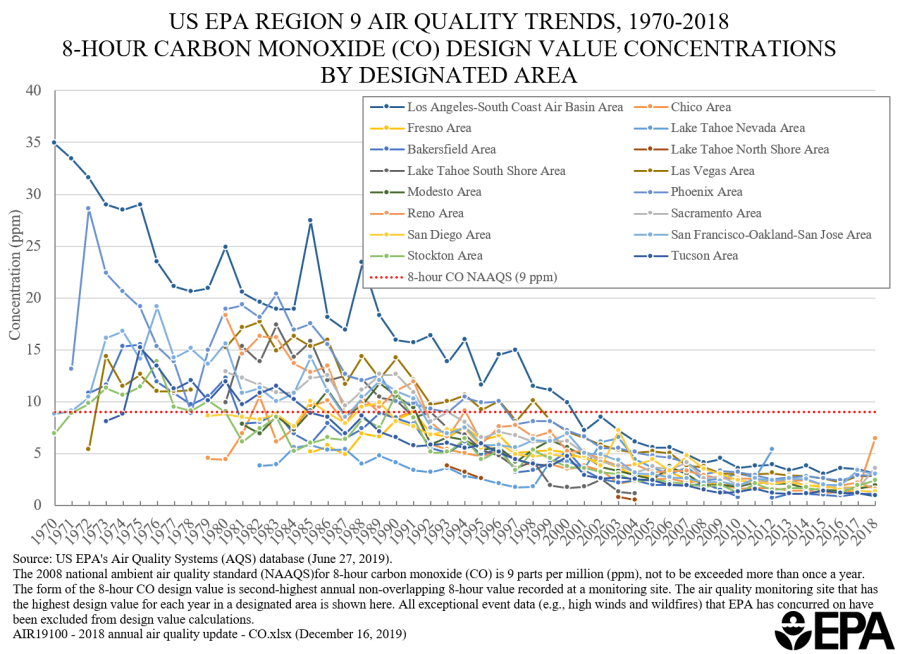For decades now, the storied smog in California has been nearly as recognizable as the Hollywood sign and Golden Gate Bridge.
Images from the 1950s show pollution so thick that the tops of skyscrapers are obscured, and much like weather reports, forecasts of smog alerts and warnings of “moderate eye irritation” were offered so the public could protect themselves, the Los Angeles Times reported.
At one point, air pollution was so bad that motorcyclists working for a blueprint company donned gas masks from a military surplus store to combat the “smog that was so thick they couldn’t see,” the Times stated.
“The masks worked, too, the men said, making seeing possible and breathing more pleasant,” the report added.
However, modern Californians aren’t facing quite the same level of air pollution. So what changed?
While gas masks provided a short-term fix, the federal government stepped in to assist with the Air Pollution Control Act of 1955, and again in 1963 with the Clean Air Act.
With the backing of Washington, D.C., the Environmental Protection Agency began tracking smog and enforcing environmental regulations, and it’s made quite an impact.

Starting with the 1970s (and despite a few setbacks), air pollution levels began to fall in L.A., the Bay Area and elsewhere within California and the Southwest.
Within three decades, levels fell beneath national standard of 9 parts per million throughout the region.
Even with a couple of cities suffering spikes in air pollution, all measured areas have remained well below the national standard since 2002, the EPA’s graph shows.
While recent transplants to L.A. might not realize it, longtime Angelenos noted on Reddit’s r/LosAngeles that in their lifetimes, they’ve seen a drastic change in air quality.
One Redditor, ranchoparksteve, said they moved to the area and worked in a downtown L.A. high rise starting in 1990.
“The smog layer was obvious and nasty. The difference is astonishing,” ranchoparksteve wrote.
Another user, Khowdung-Flunghi, said they moved to SoCal in 1977 and arrived amid “glowing orange” air, and part of their work duties in Pasadena involved tracking each day’s smog alert.
“Trust me, it is just so-o-o much better,” they posted. “Not perfect, but in retrospect a huge positive change. I got to witness it first hand – maybe there’s hope for the future after all…keep going!”





















